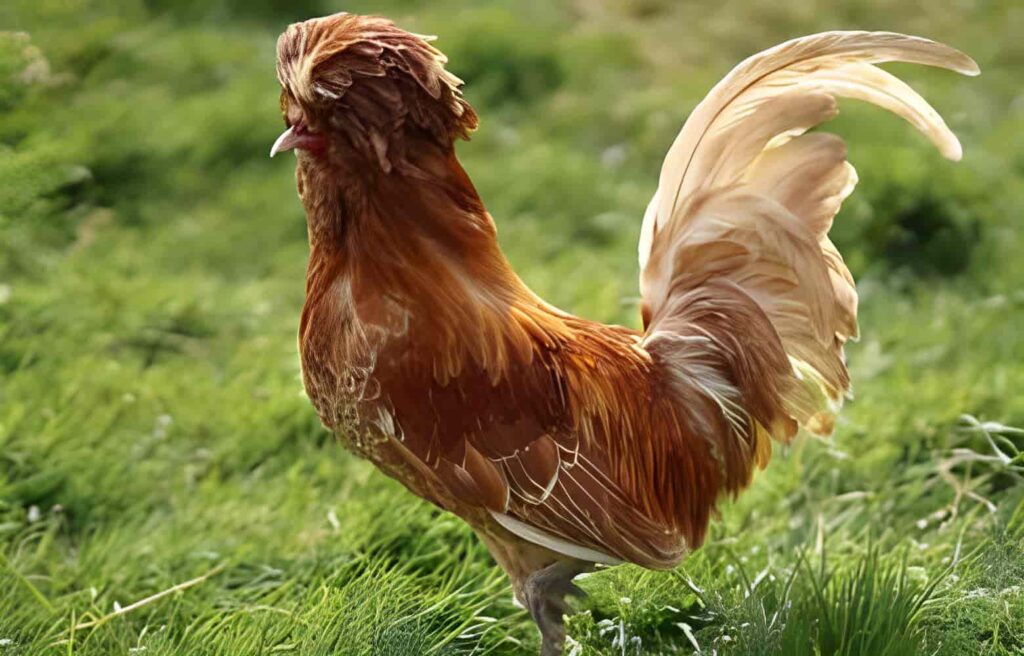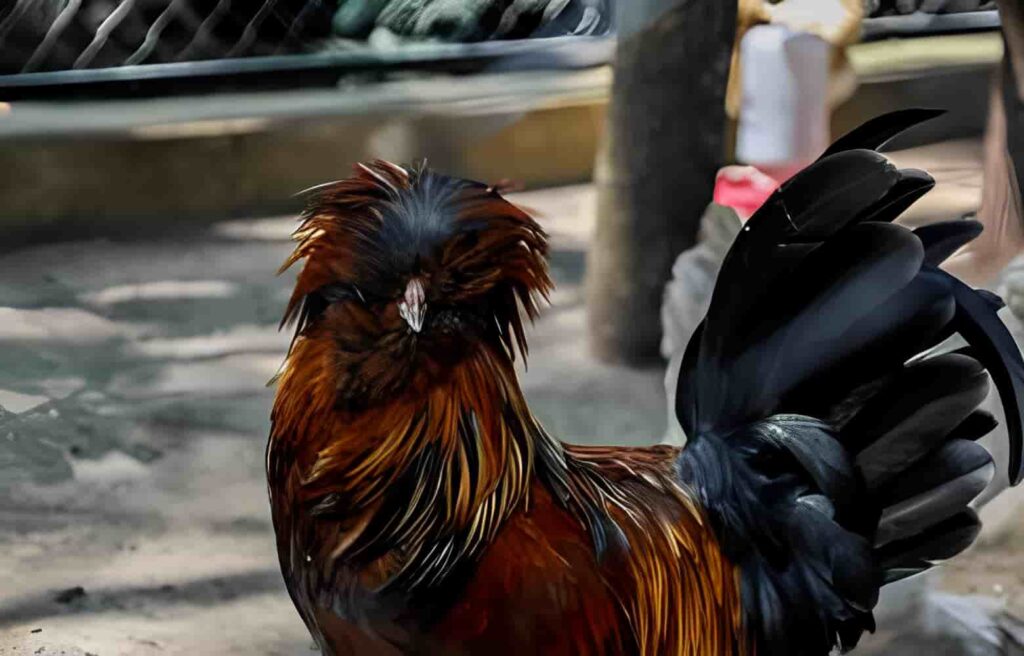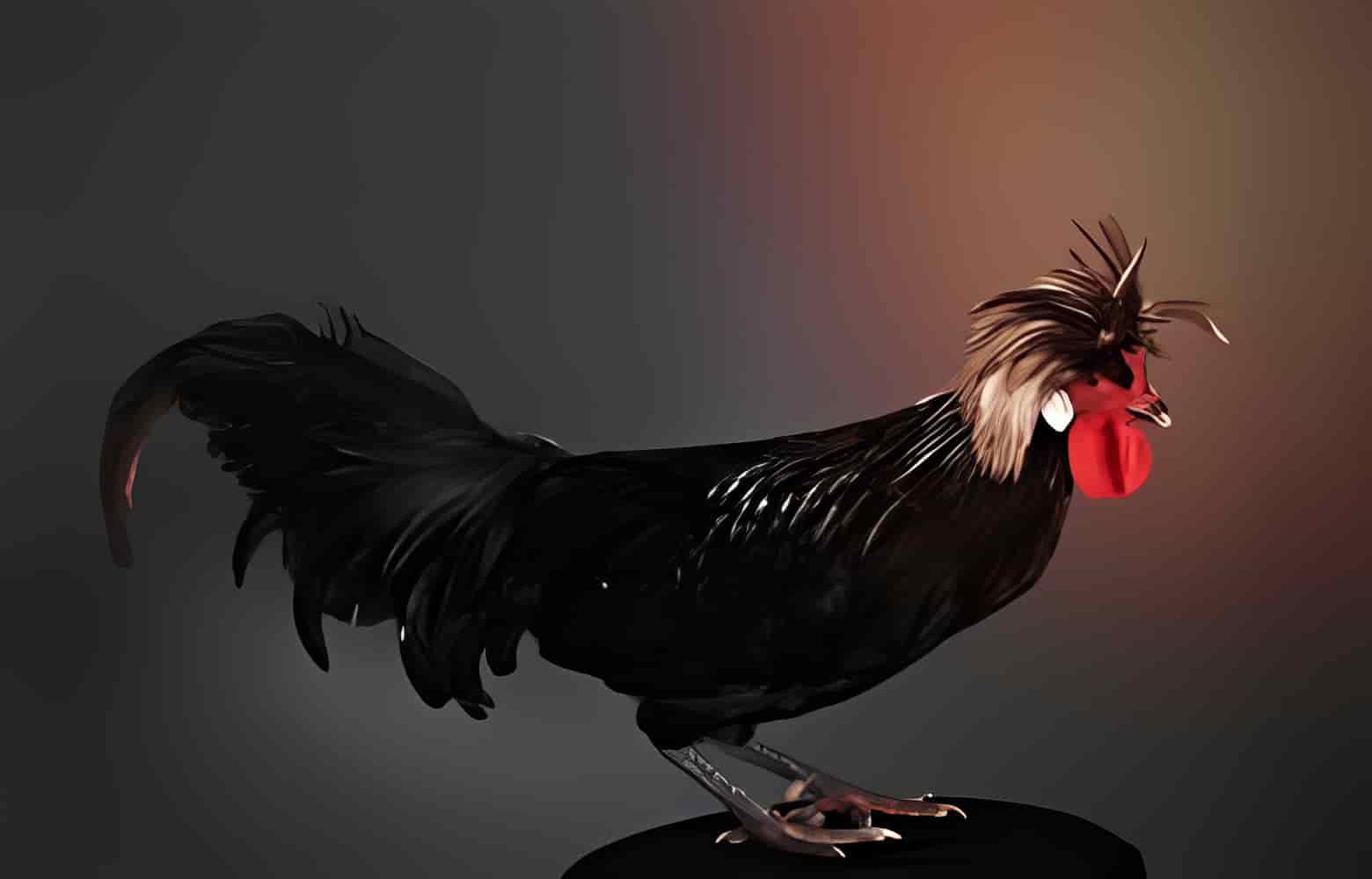The Majestic World of Polish Rooster
Table of Contents
Introduction
Polish Roosters, with their unique and striking appearance, have long fascinated poultry enthusiasts and casual observers alike. This article delves into the world of these birds, including the Tolbunt Polish Rooster, Golden Laced Polish Rooster, and others, offering insights into their care, breeding, and cultural significance.
Overview of the Polish Rooster Breed:
The Polish Rooster is not only a visual spectacle but also a breed rich in history. Originating from Europe, these birds are known for their remarkable crest of feathers that crown their heads, making them stand out in the avian world. This breed isn’t just about looks, though; it has a unique personality that adds to its allure.
Historical Significance and Origin:
The Polish Rooster, particularly the striking White Crested Black Polish Rooster, is renowned for its ornate crest. Originating in Europe, these birds have been symbols of elegance and luxury since the 16th century. These birds were a symbol of status and luxury in medieval times, often found in the gardens of the aristocracy. While the name suggests a Polish origin, the actual roots of breeds like the Buff Polish Rooster and Golden Polish Rooster are more complex, tracing back to various parts of Europe.
Characteristics of Polish Roosters
Physical Description:
When you first lay eyes on a Polish Rooster, the immediate standout feature is their head crest. This explosion of feathers is not just for show; it plays a role in their behavior and interactions. The variety in feather patterns and colors, from whites and blacks to more vibrant hues, makes each bird unique.
Feather Patterns and Colors:
Key to understanding the Polish Rooster’s allure is its diverse feather patterns. The Silver Laced Polish Rooster and Gold Laced Polish Rooster are known for their intricate lacing, while the Buff Laced Polish Rooster offers a softer color palette. Additionally, the Blue Polish Rooster stands out with its unique blue hue, adding to the breed’s appeal. Each of these varieties, from the Tolbunt Polish Rooster to the Golden Laced Polish Rooster, presents unique care and breeding challenges, which we’ll explore in this comprehensive guide.

Behavioral Traits:
Temperament and Social Behavior:
Polish Roosters are known for their docile and friendly nature. They tend to be less aggressive compared to other rooster breeds, making them a favorite for backyard flocks. However, their crest can impede their vision, leading to skittish behavior.
Vocalizations and Crow Patterns:
Their crow is as unique as their appearance. Polish Roosters have a distinct crow that is often less boisterous than other breeds, which can be a desirable trait for keeping these birds in suburban settings.
Characteristics of Different Polish Rooster Varieties
| Variety | Description |
| Tolbunt Polish Rooster | Known for its unique pattern and coloration. |
| Golden Laced Polish Rooster | Admired for striking golden feathers laced with black. |
| Silver Laced Polish Rooster | Features mesmerizing silver and black feather patterns. |
| Buff Laced Polish Rooster | Soft hues and a more subdued appearance. |
| White Crested Black Polish Rooster | Bold black body with a contrasting white crest. |
| Buff Polish Rooster | Uniform buff-colored plumage, a simpler yet elegant look. |
| Golden Polish Rooster | Cherished for its rare and unique golden feathers. |
| Gold Laced Polish Rooster | Lustrous gold and black laced feathers, similar to Golden. |
| Blue Polish Rooster | Unique blue hue, adding a rare color to the breed. |
Types of Polish Roosters:
- Tolbunt Polish Rooster
- Golden Laced Polish Rooster
- Silver Laced Polish Rooster
- Buff Laced Polish Rooster
- White Crested Black Polish Rooster
- Buff Polish Rooster
- Golden Polish Rooster
- Gold Laced Polish Rooster
- Blue Polish Rooster
Breeding and Genetics
The Genetics of Crest Development:
The crest inTolbunt Polish Roosters is a result of a genetic trait that leads to a proliferation of feather follicles in the skull area. This genetic aspect is fascinating but also comes with its set of challenges, such as vulnerability to skull injuries.
Common Health Issues:
Their unique crest can lead to issues like feather pecking and vulnerability to parasites. Additionally, they are prone to respiratory issues due to their feathered heads.
Breeding Tips for Healthy Flocks:
Breeding Polish Roosters requires careful consideration of genetics to maintain their distinctive features while ensuring the health of the flock. Selective breeding practices help in enhancing the crest size and coloration.
Housing and Care
Ideal Living Conditions:
Housing Requirements:
Polish Roosters need safe and comfortable housing. Their crest makes them susceptible to cold and wet conditions, so a dry and draft-free coop is essential. Adequate space is crucial to prevent overcrowding and stress.
Space and Fencing:
They enjoy roaming and foraging, so a spacious run or fenced area is beneficial for their wellbeing. The fencing should be secure to protect them from predators, as their impaired vision can make them more vulnerable.
Feeding and Nutrition:
Dietary Needs:
A balanced diet is crucial for these birds. They thrive on a mix of quality poultry feed, grains, and occasional treats like fruits and vegetables. Access to clean water is also vital for their health.
Supplements and Treats:
To ensure their feathers and crest remain healthy, supplements like vitamins and minerals can be added to their diet. Treats like mealworms or greens can also be given in moderation.
Comparison Table: Polish Rooster Varieties
| Feature/ Variety | Tolbunt | Golden Laced | Silver Laced | Buff Laced | White Crested Black | Buff | Golden | Gold Laced | Blue |
| Color Complexity | High | Medium | Medium | Low | High | Low | Medium | Medium | Medium |
| Popularity in Shows | Moderate | High | High | Moderate | Very High | Low | Low | High | Moderate |
| Rarity | Rare | Common | Common | Uncommon | Common | Uncommon | Rare | Common | Uncommon |
| Care Complexity | High | Medium | Medium | Medium | High | Medium | High | Medium | Medium |
| Preferred Habitat | Spacious | Varied | Varied | Spacious | Sheltered | Varied | Sheltered | Varied | Spacious |
Health and Wellness
Common Diseases and Prevention:
Tolbunt Polish Roosters are susceptible to common poultry diseases. Regular health check-ups, vaccinations, and maintaining a clean environment are key to preventing these illnesses.
Grooming and Crest Care:
Their crest requires regular grooming to prevent matting and infestation by parasites. Keeping the crest trimmed can also help improve their vision and reduce stress.
Veterinary Care Needs:
Regular veterinary visits are essential for early detection and treatment of any health issues. A vet familiar with the breed’s specific needs can provide tailored care.
The Polish Rooster in Culture
Role in Farming Traditions:
Polish Roosters have been a part of farming traditions for centuries. They are valued for their egg-laying abilities and unique appearance, often being a centerpiece in farmyards.

Polish Roosters in Shows and Competitions:
These birds are a staple in poultry shows due to their unique look. Competitions often have specific categories for Polish breeds, highlighting their crest and coloration.
Symbolism and Cultural Significance:
In various cultures, the Polish Rooster is seen as a symbol of good fortune and vigilance. Their presence in folklore and art underscores their impact on human culture.
Challenges and Controversies
Ethical Breeding Practices:
Breeding Polish Roosters responsibly involves ensuring the health and
wellbeing of the birds. Ethical breeders focus on improving the breed without compromising the health of the animals.
The Debate Over Crested Breeds in Commercial Farming:
There’s ongoing debate about the role of crested breeds like Polish Roosters in commercial farming. Their unique needs and vulnerabilities often put them at a disadvantage in large-scale farming settings.
Conclusion
The Future of Polish Rooster Breeding:
Looking ahead, the focus is on sustainable breeding practices that prioritize the health and welfare of these birds. Efforts are also underway to maintain the breed’s genetic diversity.
Conservation and Preservation Efforts:
Conservation efforts are crucial to ensure the survival of unique breeds like the Polish Rooster. Breed enthusiasts and organizations are working towards preserving their genetic lineage.
Additional Resources
Recommended Reading and Websites:
For those interested in learning more, there are numerous resources available. Websites dedicated to poultry breeds, books on chicken care, and online forums are great places to start.
Organizations and Clubs for Polish Rooster Enthusiasts:
Joining a club or organization dedicated to Polish Roosters can provide valuable insights and support. These groups offer a platform for sharing experiences, tips, and even coordinating breeding efforts.
In conclusion, Polish Roosters are not just a pretty face in the poultry world. They are a breed rich in history, with unique needs and characteristics. Their care requires attention and understanding, but the reward is a truly magnificent bird that is a joy to behold and a delight to raise. Whether you’re a seasoned poultry keeper or a curious observer, there’s no denying the charm and intrigue these birds bring to the avian world.
FAQs About Polish Roosters
Q1: How long do Polish Roosters typically live?
A1: Polish Roosters generally have a lifespan of 5 to 8 years, depending on their living conditions and overall health.
Q2: Are Polish Roosters good egg layers?
A2: Polish hens are moderate egg layers, typically producing around 120 to 200 eggs per year. However, the focus with Polish breeds is often more on their ornamental value than egg production.
Q3: Can Polish Roosters tolerate cold weather?
A3: While Polish Roosters can tolerate a range of temperatures, their crested feathers can get damp and frosty in very cold weather, which can lead to health issues. Providing a dry and sheltered coop is essential in colder climates.
Q4: Are Polish Roosters suitable for first-time chicken keepers?
A4: Due to their unique crest and the care it requires, Polish Roosters might be challenging for first-time chicken keepers. They are better suited for those with some experience in poultry keeping.
Q5: How do you maintain the crest of a Polish Rooster?
A5: Regular grooming is important to keep the crest clean and free from parasites. Trimming the feathers around their eyes can also help improve their vision and prevent injuries.
Q6: Are Polish Roosters noisy?
A6: Polish Roosters have a typical rooster crow, but they are not known to be excessively noisy. Their crowing is similar in volume and frequency to other rooster breeds.

